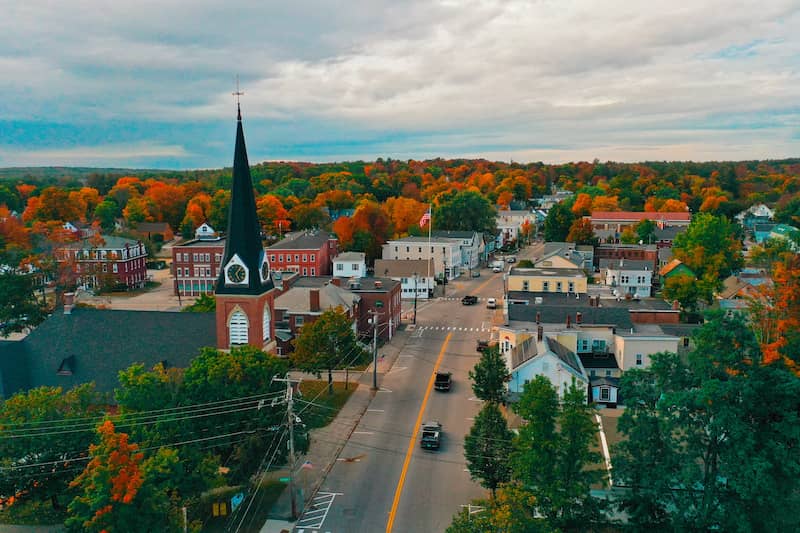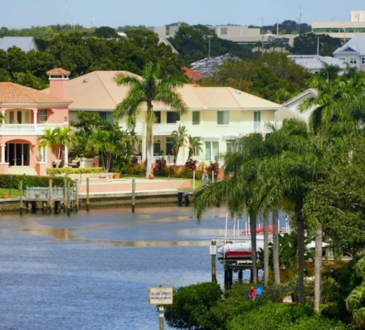
Why do people choose to live in notoriously expensive states? They’re all beautiful places, for one reason. Anyone who’s been to Hawaii, for example, may say it’s one of the most beautiful places on earth. But – and there’s no getting around it – it’s really expensive to live there.
In fact, how much further a dollar goes when you live in Montana than it does in Massachusetts is pretty staggering. Of course, the average income per person is higher in Massachusetts, too, and that has something to do with why it’s so expensive to live there. There are many reasons a state may be more expensive to live in. Here’s why the top 10 most expensive states are so costly for residents.
Defining The Most Expensive States And Cost Of Living
Determining how expensive it is to live in a state is a matter of examining lots of data, and it is not an exact science. Many factors contribute to the cost of living in a particular place and they are constantly changing. Still, as long as we look at data applied to each state equally, a pretty solid picture emerges.
To determine the most expensive U.S. states, Quicken Loans looked at median sales data, as well as data from The Council for Community and Economic Research in key consumer spending metrics (see Methodology below for details). What people pay for housing, food, energy, transportation, health care and miscellaneous goods and services in any given place provides a good estimation of how much of their annual income goes to toward these essentials.
See What You Qualify For
Home Purchase
Home Refinance
Tap Into Equity
What Is The Most Expensive State To Live In?
According to several studies on cost of living, Hawaii is the most expensive U.S. state to live in. Prices are typically double in Hawaii compared to those on the mainland, and the continued rise in inflation is making costs ranging from housing to health care much more expensive.
Of the remaining nine states in our ranking, five of them are in the northeast, three have hundreds of miles of Pacific Ocean shoreline and one is Alaska. Not coincidentally, six of these states are also among the top 10 in personal per capita .
Top 10 Most Expensive States To Live In
1. Hawaii

- Median Sold Price: $713,199
- Grocery Items Index: 9
- Transportation Index: 5
- Health Care Index: 6
Apparently, everything’s more expensive when you live in an island paradise in the middle of the Pacific Ocean. Hawaii’s astronomical median home sale price (second only to California) is due to high demand for relatively limited land available for development. Virtually all the consumer goods and much of the food has to be shipped thousands of miles – and the end-buyer ultimately pays for that.
Electricity rates in Hawaii are two to three times more expensive than any other state. Alas, the people who live there have figured all of that into their equation – and decided to stay. Some things are more important than money. Hawaii is one of the most beautiful places on earth and one of the “best states to retire.”
2. California

- Median Sold Price: $737,123
- Grocery Items Index: 1
- Transportation Index: 9
- Health Care Index: 0
The Golden State sits near the top of our list with the highest median home sale price in the United States. The largest and arguably one of the most beautiful of the contiguous states, California has always been an attraction for dreamers with big ideas seeking to better their lives, and this has brought a constant supply of new energy to the state’s vibrant economy. For such a massive state to have a top 10 median household income is impressive. But with all this success, Californians pay more for things. Electricity rates in California, for example, are among the highest in the nation.
3. Alaska

- Median Sold Price: $365,000
- Grocery Items Index: 0
- Transportation Index: 8
- Health Care Index: 7
In terms of wide open spaces and natural beauty, Alaska has it all – hundreds of miles of Pacific shoreline, mountain ranges, glaciers, massive forests and abundant wildlife. One consequence of it being America’s largest state is that it’s one of the most expensive to live in. Because it is so vast and the population so widespread, the cost of shipping consumer goods and groceries across Alaska is very high—in fact, only Hawaii pays more for groceries than Alaska.
In 2023 the cost of living in Alaska was 24.4% higher than the national average. The cost of health care in Alaska is the highest in the U.S. This is due in large part to Alaskans’ lower access to less-expensive preventative health care, such as regular checkups, which can prevent higher-cost health emergencies down the road.
4. Massachusetts

- Median Sold Price: $522,870
- Grocery Items Index: 9
- Transportation Index: 3
- Health Care Index: 4
Massachusetts ranks fourth on our list for highest median home sold price. This is driven in part by a low supply of single-family homes in the state. The median home sale price of nearly $523,000 dwarfs the U.S. average, which stood at $375,700 in the first quarter of 2023, according to the National Association of REALTORS® (NAR).
With the fourth-highest cost of living in the U.S., at 41% above the national average, seemingly everything is more expensive in Massachusetts. This includes energy. At 31.71 cents per kilowatt-hour of electricity, Massachusetts has the third-highest electricity rates in the U.S. It’s also an economic reality that things cost more in places where there is more wealth, and Massachusetts is consistently ranked among the top five wealthiest states in America. The Bay State ranks fourth in per capita income at $45,555 and third in mean household income at $115,964.
5. Oregon

- Median Sold Price: $457,735
- Grocery Items Index: 1
- Transportation Index: 1
- Health Care Index: 8
With good reason, Oregon has seen its population and economy boom in the last few decades, with many seeking jobs in Oregon’s tech industries. The state’s natural beauty is second to none, from the Pacific coastline to Mt. Hood, and attracts outdoor adventurers. Unfortunately, the state’s housing supply has struggled to keep up with all this growth, which means rents are high and the average cost of a single-family home is well above the national average. The Beaver State also has some of the highest property tax rates in the country, furthering the cost of home ownership. Oregon ranks ninth among U.S. states for highest cost of living at 21.1% above the national average.
6. New Hampshire

- Median Sold Price: $363,106
- Grocery Items Index: 2
- Transportation Index: 7
- Health Care Index: 1
Much like Massachusetts, its neighbor to the south, New Hampshire, is a wealthy New England state with the 11th-highest household income in the U.S. Because goods and services tend to cost more in wealthier areas, New Hampshire ranks 13th for highest cost of living at 12.49% above the national average. Further, at 31.72 cents per kilowatt-hour of electricity, New Hampshire has the second-highest electric bill in the nation.
Housing supply tends to be low, which drives up rents and home values. While residents do not pay income or sales tax, property taxes in The Granite State are fourth-highest in the U.S. Still, New Hampshire remains a popular place to live for its four-season climate, slower paced lifestyle and charming New England hamlets. There is great natural beauty, too, with the White Mountains in the north and even a small slice of the Atlantic coastline to the south.
7. Vermont

- Median Sold Price: $306,433
- Grocery Items Index: 1
- Transportation Index: 0
- Health Care Index: 6
Vermont is a quirky state and its native inhabitants are by and large humble folk, certainly not considered wealthy or pretentious. Much of the wealth in Vermont comes from residents of far richer nearby states, such as New York, Connecticut and Massachusetts, who vacation in Vermont or have a second home there. This not only drives up the cost of goods and services, but it also widens the wealth gap, causing a scarcity of housing for lower-income workers. Because Vermont’s economy is highly agrarian and residents are so spread out (it is the second least populated state in the U.S.), the state struggles to develop the infrastructure necessary to compete with the high-tech economies of its neighbors. Consequently, many young people leave the state in search of higher paying jobs.
8. Washington

- Median Sold Price: $532,276
- Grocery Items Index: 5
- Transportation Index: 3
- Health Care Index: 7
The state of Washington has enjoyed staggering economic growth over the last few decades, due in part to the large technology industry that sprouted up around Seattle. The state’s largest city continues to experience tremendous population growth as workers from around the world come seeking high paying jobs. The need for housing brought on by this boom has created one of the most expensive real estate markets in the country, with the median home sold price third-highest after Hawaii and California. The housing costs in Seattle are also driven up by the city’s zoning restrictions, which limit the amount of land available for dense housing developments in favor of single-family homes.
9. New York

- Median Sold Price: $358,042
- Grocery Items Index: 2
- Transportation Index: 7
- Health Care Index: 7
The top reason the state of New York is among the most expensive in the U.S. is that its largest city is among the most expensive places to live in the world. With a population of 8.5 million in New York City’s five boroughs and many more in the surrounding suburbs and Long Island, the Big Apple’s metropolitan area holds about half of the entire state’s population.
Because so many people need accommodations near the city, housing prices are sky high. While the state’s median home sold price is close to the national average, it does not reflect the high cost of housing in NYC, where only 16% of the city’s housing is single family. The vast majority of city residents rent, and rents are extremely high. The average rent for a 700 square foot apartment in the borough of Manhattan, which is about $4,600 a month, would easily cover the mortgage payment on a 3,500 square foot house in many areas of the United States.
10. Connecticut

- Median Sold Price: $314,903
- Grocery Items Index: 9
- Transportation Index: 5
- Health Care Index: 3
With several of its western counties considered suburbs of New York City, Connecticut is one of the wealthiest states and ranks fifth for median household income. Many Connecticut residents commute by car or train to high paying jobs in New York and return to their quiet, comfortable neighborhoods at night, many of them in them in the beautiful New England countryside or along Long Island Sound.
Higher income typically means higher prices for things, and the cost of living in Connecticut is 21.6% higher than the U.S. average, according to World Population Review. Housing, in particular, is pricey in the Nutmeg State, at 34.6% above the national average. Connecticut residents pay more in utility costs than any state except Hawaii and Alaska.
Ways To Save When Buying A House In An Expensive State
All of these very expensive states must have something going for them because millions of people choose to live in them. Factors that most of these states have in common are a strong economy, excellent services, good schools, great natural beauty and quality health care. Unfortunately, all are exceptional in another key metric – high cost of housing.
If you’ve determined that it’s worth your while to pay more to live in one of these states, then it’s good to have a plan to save up for buying a house. You should also know that buying an expensive home does not end at the down payment. The monthly payment on your mortgage includes principal, interest, property taxes and insurance and is a decades-long commitment. You’ll want to ensure that you don’t become house poor, a condition in which so much of your income goes to housing that there is little left for living. Here are a few strategies:
- Cut expenses. You may have to cut back on some luxuries, such as an expensive car or travel. Look for housing in an area that is walkable or has good public transportation. This way you can reduce reliance on your car. By becoming a one-car family as opposed to two, you can save hundreds of dollars a month on car payments and insurance.
- Work a side hustle. If the mortgage on a house you want to buy is a few hundred dollars a month more than you feel comfortable paying, you can make up the difference by working a side hustle. Many of these jobs can be done at any hour of the day and at your convenience, so you can keep your day job. Driving for a ridesharing service or food delivery has never been easier – log on and off whenever you like. But there are lots of other new side hustles in today’s economy, many of them skilled.
- Buy during the offseason. The housing market has up and down seasons throughout the year. When demand is low, prices drop. Ask your REALTOR® when these swings occur where you’re house hunting. Typically, the housing market picks up in spring and drops in late fall and winter.
- Buy a fixer-upper. If you’re willing to live in a house that’s a little rundown for a while, you might be able to find an inexpensive project house in an otherwise very desirable neighborhood. You can fix the place up as you live in it, on your own schedule. Even better if you’re handy and can do a lot of the work yourself. When you eventually bring the place up to neighborhood standards, you may have built up tremendous equity in the property.
The Bottom Line: High Costs Make Some States Challenging To Live In
The downside to a state being a very desirable place to live is that the high demand drives up prices on everything, especially the biggest expense – housing. If you’ve determined that the advantages and intangible qualities of an expensive state outweigh the extra cost of living there, then it’s time to start zeroing in on the perfect neighborhood for you and your family. Let Quicken Loans help you .
Take the first step toward buying a house.
Get approved to see what you qualify for.
Methodology: Finding The Most Expensive States
Quicken Loans collected and analyzed the most recent data on seven key statewide metrics to give us insight into the most expensive states to live in. The metrics used in this study include 2022 median sold price of homes, grocery items index, housing index, utilities index, transportation index, health care index and the miscellaneous goods and services index. These metrics were chosen based on public data availability and topical relevancy.
Weights were then applied to each metric depending on their individual importance in the study. The weighted scores for each metric were summed to create the overall score for each state. The final scores are sorted to produce the final rankings.
|
Metric |
Weight |
Level |
Source |
|---|---|---|---|
|
2022 median sold price |
12% |
State |
Rocket Homes |
|
Average grocery items index |
17% |
State |
The Council for Community and Economic Research |
|
Average housing index |
12% |
State |
The Council for Community and Economic Research |
|
Average utilities index |
10% |
State |
The Council for Community and Economic Research |
|
Average transportation index |
19% |
State |
The Council for Community and Economic Research |
|
Average health care index |
20% |
State |
The Council for Community and Economic Research |
|
Average miscellaneous goods and services index |
10% |
State |
The Council for Community and Economic Research |




